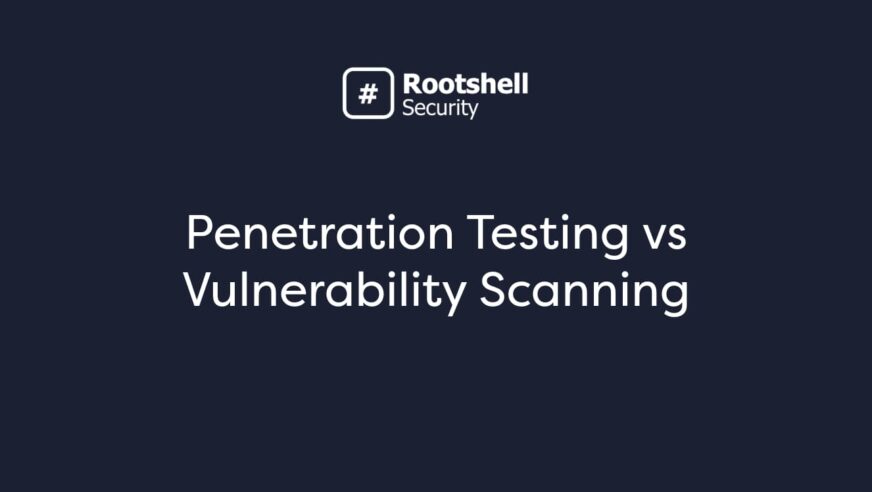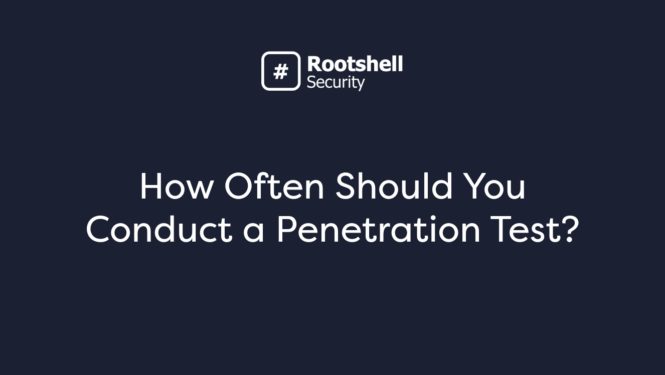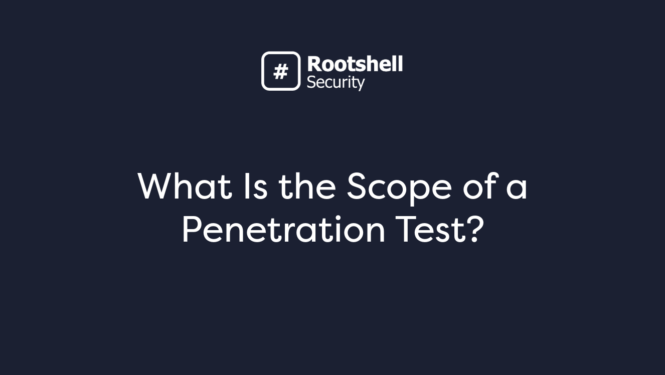Vulnerability scans and Penetration tests are two approaches to finding security weaknesses. Often used together, they provide an overview of your organisation’s security health, delivering different data within the same area of focus.
Vulnerability scanning focuses on finding known flaws across your systems and networks, helping you understand where potential issues lie. Penetration testing, on the other hand, takes things further by simulating real-world cyberattacks to test how well your defences respond in practice.
While vulnerability scanning and penetration testing are both important components of a strong attack surface management strategy, business owners need to understand the value each one brings and how they work together to improve their security. In this article, we’ll break down the differences between vulnerability scanning and penetration testing, explain when to use each, and explore how combining both can strengthen your organisation’s defence against cyber threats.
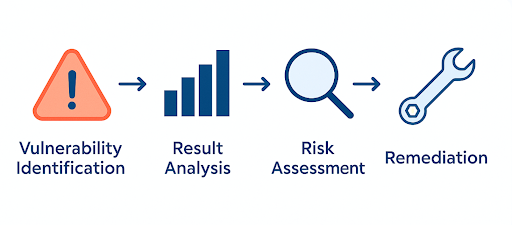
What Is Vulnerability Scanning?
Vulnerability scans are automated tests that assess your computers, networks, and applications for weaknesses that threat actors could exploit. They don’t attempt to find out how these weaknesses might be exploitable; they simply report them. For this reason, they form the initial stage in a broader vulnerability assessment, which assesses the likelihood of the vulnerability being successfully exploited.
Since vulnerability scans are automated, you can schedule them to run annually, quarterly, or even monthly. However, if you’re making any changes to your system, it is advisable to run a vulnerability scan at the time to ensure the change is not introducing any new risks.
Vulnerability Scan Reporting
At the end of each scan, you’ll get a detailed report of the vulnerabilities found. This will usually outline the affected systems, the severity of the vulnerability and the steps necessary to remediate it. As vulnerability scanning is automated, you may get several false positives. That is, the scanner may incorrectly flag non-existent vulnerabilities.
Additionally, the scan might miss larger security flaws. Nevertheless, since the scan is only reporting vulnerabilities, you’ll receive a risk rating for each one, which allows you to assess the identified weaknesses and prioritize fixes. By working with a dedicated vulnerability scanning provider, you can benefit from more in-depth analysis and detailed reporting.
Benefits of a Vulnerability Scan
Identifies Vulnerabilities Before Hackers Can
Vulnerability scanning gives you a general look at any weaknesses in your system that could be used by threat actors. These scans don’t take very long to complete and can quickly point out any exploitable flaws you might need to fix. Conducting regular vulnerability scans will help you determine the overall effectiveness of your security measures. If you’re inundated with vulnerabilities, that’s a sign that your systems or software are severely flawed and need to be rethought.Saves You Time and Money
Automated scans are relatively inexpensive to run and can save you the time and cost required to fix the damage from cyber attacks. Vulnerability scanning reduces the risks of a data breach, which will come with a range of costs, including remediation and the loss of customers as a result of reputational damage and fines. If you have cyber insurance, you will also need to carry out regular vulnerability scans to prove that you were addressing your cybersecurity responsibilities to receive your payout.Regulatory Compliance
Vulnerability scanning is now a requirement for compliance with certain cybersecurity regulations, including the EU’s newly introduced Digital Operational Resilience Act (DORA). The international standard for information security, ISO 27001, also requires organisations to take similar steps, and the PCI DSS (Payment Card Industry Data Security Standard) includes vulnerability scanning in its list of requirements.Limitations of a Vulnerability Scan
Since a vulnerability scan is automated, it has certain limitations. These include:
- False positives. A vulnerability assessment will always come up with some false positives, i.e., something that’s identified as a weakness but actually isn’t.
- Requires manual verification. Since the scan generates false positives, you need a human to go through the results and determine your vulnerability remediation priorities.
- Incomplete information. The assessment identifies vulnerabilities but doesn’t tell you whether the vulnerability is actually exploitable and what the consequences of an attack might be.
- Can disrupt operations. While vulnerability scans are non-invasive, they do require some bandwidth. They may impact performance if they are scheduled during peak hours or target in-demand systems.
What Is Penetration Testing?
A penetration test, or a pen test, is a simulated cyberattack carried out to identify and assess weaknesses within a system. Unlike vulnerability assessments, which simply detect weaknesses, penetration tests test the security controls in place by attempting to breach them, just as an attacker would.
Penetration tests often include manual techniques such as social engineering to provide a realistic view of how strong your security is. Since a penetration test is carried out manually, the tester can use their skills and creativity to find exploitable weaknesses in your systems and network.
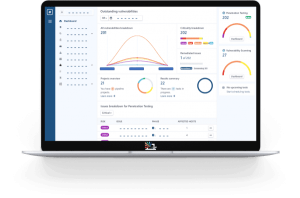
Benefits of Penetration Testing
Penetration testing offers practical and strategic benefits that help strengthen your organisation’s overall security. It helps to:
Identify Vulnerabilities
Penetration testing simulates real-world cyberattacks, allowing hackers to scan for weaknesses in your systems, applications, and networks. Unlike automated scans, penetration testing mimics the techniques used by actual attackers, revealing vulnerabilities that might otherwise go unnoticed. This hands-on approach gives you a clearer picture of how strong your security is, showing exactly how and where defences might fail under pressure.
Deliver Detailed Security Data
Penetration tests go beyond simply identifying weaknesses; they provide reports detailing how vulnerabilities were discovered, how they could be exploited, and what the potential consequences could be. These insights help security teams understand the full context of each issue, making it easier to refine internal policies, improve staff training, and tighten security.
Help Prioritise Fixes
Penetration testing helps you assess the potential impact of each issue by demonstrating what could happen if an attacker were to exploit it. This allows your organisation to address vulnerabilities based on risk, meaning that critical threats are dealt with quickly.
Improve Compliance
Many regulatory frameworks and industry standards either require or strongly recommend regular penetration testing. Carrying out these tests helps make sure you stay compliant and avoid fines or legal consequences.
Limitations of Penetration Testing
- Resource intensive. Pen testing is a manual process performed by a tester with in-depth knowledge of IT security. As a result, it requires a substantial commitment of valuable resources.
- Costly. Given the technical demands and time involved, pen testing is relatively costly and may take up a substantial proportion of small organizations’ IT security budgets.
- Limited scope. Pen testing focuses on targeting and exploiting specific systems or vulnerabilities, rather than providing a comprehensive overview of your systems and security measures.
- Legal and ethical boundaries. Pen testers cannot fully replicate the behaviour of real-world threat actors as they are held to specific legal and ethical rules that attackers may well ignore.
As you can see, there are a range of key differences between pen testing and vulnerability scanning, even if they have a shared goal of strengthening your security posture and reducing the risk of your systems being successfully targeted.
In the table below, we’ve summarised the main points of comparison. Read on below to learn more about how the approaches are similar and why you should make use of both to maximise your cybersecurity efforts.
| Vulnerability Scanning | Penetration Testing |
|---|---|
| Automated process | Manual process |
| Provides a broad overview of vulnerabilities | Assesses specific security issues in-depth |
| Conducted quarterly or monthly | Conducted once or twice per year |
| Relatively cheap and uses few resources | Can be costly and resource-intensive |
| Requires limited technical knowledge | Requires extensive experience and skill |
Similarities Between Pen Testing and Vulnerability Scans
Although penetration testing and vulnerability scanning are different services, they have some similarities, such as:
Both Pre-Emptively Identify Exploitable Weaknesses
Cybercriminals scan businesses to find any exploitable vulnerabilities. When they use those weaknesses to attack your system, you can lose money, data, and even control of your apps and services – not to mention your company’s credibility.
Both pen tests and vulnerability scans help you to identify exploitable weaknesses before threat actors do. As a result, you can take steps to ensure the holes are patched and minimise the risk of a costly cyber attack.
Both Help You Strategize Fixes
Both vulnerability scans and pen tests reveal critical vulnerabilities that need to be fixed while helping you assess their severity. They enable you to determine which weaknesses should be dealt with immediately and which ones can be taken care of later. That way, you can allocate resources more efficiently, prioritizing critical vulnerabilities that pose an immediate risk to your business.
Both Assess Your Network’s Security
Once you’ve tested the weaknesses across your devices, applications, and network, you can find out how secure your organization truly is. This, in turn, allows you to take the measures needed to make your business safe from a full range of attacks in the future.
Both Save You Money Long-Term
Since both vulnerability scans and pen tests help you find holes in your security before fraudsters do, you can prevent attacks from taking place. That means your business no longer has to spend money on mitigating the effects of an attack. You’ll also avoid fines that could result in legal action after a data breach, as well as the reputational damage that larger-scale breaches can cause.
Both Protect Your Clients’ (and Your Own) Data
Businesses have a legal requirement to protect their customers’ personal data, which means you need the appropriate technical security in place to securely store sensitive information. Both these assessments are a way of ensuring that your customers’ data is adequately protected and that you meet the requirements of the GDPR, DORA, CCPA and other key data privacy legislation.
Both Help You Stay Up to Date With Your Security
Cybersecurity continues to evolve to keep up with emerging threats – for instance, the recent rise in the use of generative AI for phishing attacks. As a result, certain measures that were secure in the past might not be as effective now. Vulnerability assessments and pen testing enable you to keep up with the latest security trends and proactively adapt to emerging threats.
Build a Reputation for Cybersecurity
Constant vigilance means your business develops better cybersecurity for your clients and customers. That, in turn, helps your reputation. And with 71% of consumers now concerned about their data security, being known for the quality and extent of your cybersecurity measures can have a major impact on your bottom line.
Vulnerability Scanning and Penetration Testing With Rootshell Security
Both vulnerability scanning and penetration testing work hand in hand to strengthen your security strategy. Vulnerability scans provide regular, automated insights into potential weaknesses, offering a quick snapshot of your network’s health.
Penetration tests, on the other hand, offer a deeper investigation, simulating real-world attacks to find the true exploitability of those vulnerabilities. While penetration tests may be more costly, they offer invaluable insights by simulating actual threat scenarios.
For the best protection, combining both approaches is key. If you’re ready to take your security to the next level, book a demo and explore our vulnerability management services today.
